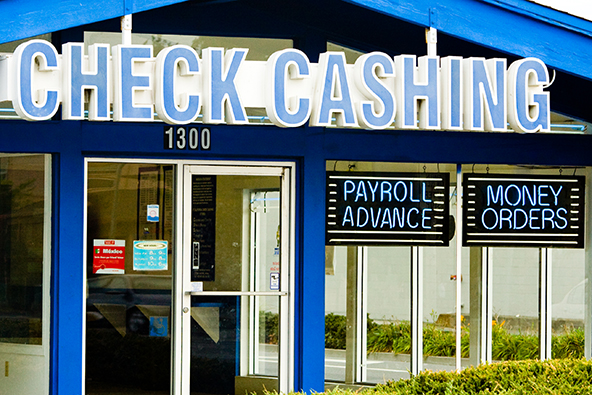Chargeback Monitoring

Chargebacks are the number one reason why merchant accounts are suspended and terminated, especially in the e-commerce and direct marketing industries. To ensure compliance with industry regulations, merchants should establish procedures for monitoring chargebacks on a regular basis, as part of their risk management process.
Chargebacks typically result from inadequate card processing procedures and a consistently applied review process will help identify the problematic areas. It is well established that chargeback levels vary by industry type and some industries require more stringent chargeback monitoring procedures than others. MO / TO and web-based merchants typically generate higher chargeback levels than their store-front counterparts. The reason why is that the former operate in a card-not-present environment, while the latter physically process the card payments, which enables them to more easily verify the validity of both the card and the cardholder. Visa and MasterCard designate merchants operating in a card-not-present environment as high-risk by default and charge them higher processing rates.
The following best practices should be incorporated into your chargeback monitoring program:
- Track chargebacks and representments by reason code. Each reason code is associated with unique risk issues and requires specific remedy and prevention strategies.
- Separate initial chargebacks from chargebacks that remain after representment. This is important, because it will help you evaluate the effectiveness of your representment procedures by estimating the ratio of chargebacks that remain unresolved after you have provided the requested supporting documentation. If the proportion of net chargebacks (that you could not reverse) remains consistently high, you should consider reviewing your sales process and the effectiveness of your correspondence with your customers.
- Separate chargebacks resulting from card-present transactions from chargebacks resulting from card-not-present ones. If your organization combines traditional retail with card-not-present transactions (MO / TO or e-commerce), you should track the card-present and card-not-present chargebacks separately. This will help you estimate the proportion that each group represents. Similarly, if your business combines MO / TO and e-commerce sales, these chargebacks should also be monitored separately. Preventive and remedial chargeback measures vary by business type and monitoring chargeback rates separately will help better pinpoint potential problems.
Both Visa and MasterCard have developed their own chargeback monitoring programs to ensure that both merchants and processing banks are in compliance with their requirements:
- Visa’s Merchant Chargeback Monitoring Program (MCMP) monitors chargeback rates for all merchants on a monthly basis. If a merchant has excessive chargebacks, Visa notifies its processor in writing. MCMP applies to all merchants with more than 100 total transactions per month (sales, credits, etc.), more than 100 chargebacks, and an overall chargeback-to-transaction rate of one percent or greater. First notification of excessive chargebacks for a specific merchant is considered a warning. Visa imposes fines only if actions are not taken within an appropriate period of time to return chargeback rates to acceptable levels.
- Visa’s High Risk Chargeback Monitoring Program (HRCMP) is specifically designed to reduce excessive chargebacks by high-risk merchants. As defined by Visa, high-risk merchants include direct marketers, travel services, outbound telemarketers, inbound teleservices, and betting establishments. Just as the MCMP, HRCMP applies to all high-risk merchants with more than 100 total transactions per month (sales, credits, etc.), more than 100 chargebacks, and an overall chargeback-to-transaction rate of one percent or greater. Unlike the MCMP, under HRCMP, there is no warning period and fines of $100 per chargeback are imposed immediately if a merchant has an excessive chargeback rate.
- Visa’s Global Merchant Chargeback Monitoring Program (GMCMP). The Global Chargeback Monitoring Program (GMCMP) is operated by Visa International (a separate entity from Visa USA) and administered by each region. The program is based on the U.S. MCMP. The GMCMP applies when a merchant meets or exceeds specified International chargeback thresholds which differ by region. Under GMCMP, there is no warning period and fees may be assessed to the processing bank immediately if a merchant has an excessive chargeback rate.
- MasterCard’s Excessive Chargeback Program (ECP). Under the ECP, processors are required to calculate and report to MasterCard, for each calendar month, the chargeback-to-transaction ratio (CTR) for each of their merchants.?áCTR is the number of chargebacks received by the acquirer for a merchant in a calendar month divided by the number of the merchant’s sales transactions in the preceding month acquired by that acquirer, calculated in basis points (a CTR of 1 percent equals 100 basis points). MasterCard uses two chargeback classifications:
- Chargeback-Monitored Merchant (CMM) is a merchant that has a CTR in excess of 50 basis points and at least 50 chargebacks in a calendar month.?áMasterCard assesses processors a reporting fee of $50 for each CMM report submitted.
- Excessive Chargeback Merchant (ECM) is a merchant that in each of two consecutive calendar months has a minimum CTR of 100 basis points and at least 50 chargebacks in each month.?áThis designation is maintained until the ECM’s CTR is below 100 basis points for two consecutive months. MasterCard assesses processors a reporting fee of $300 for each ECM report submitted, as well as an additional assessment fees, based on the merchant’s CTR rate.
Remember that chargeback management is a work in progress and you should constantly be looking for ways to improve your preventive measures. Lower chargeback rates demonstrate that you are serious about processing credit card transactions according to industry standards and will give you leverage when negotiating processing rates with your processor. On the other hand, be advised that the processing rates that you received from your processor when you set up your merchant account are only as good as your ability to process transactions in a way that was agreed on in your processing agreement. Excessive chargeback rates can and will increase your payment processing costs and, if inadequately addressed, these issues will eventually lead to the suspension of your merchant account.
Image credit: Nieuwedemocraten.com.


